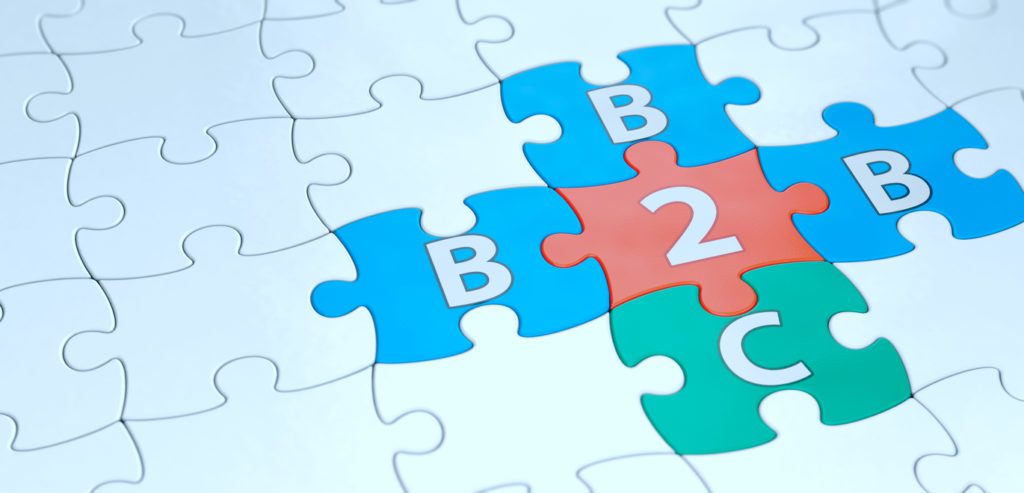
Rich Minns, North America commerce leader at Capgemini North America
If this past year has proven anything in the retail space, it’s that ecommerce strategies and channels are constantly evolving to meet new customer expectations. For example, the D2C (direct-to-consumer) model sounds like it should be the exclusive domain of B2C brands.
However, it can help B2B brands add new revenue streams, find new customer segments, and build loyalty with their current customers. When customers grant permission, D2C interactions can also deliver data for B2B companies to improve their products, develop new ones, and create more immersive and personalized customer experiences. D2C also gives B2B companies more control over their branding, messaging and ownership of the customer relationship.
D2C is growing in popularity, with an estimated $18 billion in U.S. sales in 2020. As a result of their personal D2C experiences, many business buyers crave D2C convenience and efficiency in the B2B space. Meanwhile, overall B2B ecommerce is growing as well. Forrester projects that by 2023, B2B ecommerce will be worth $1.8 trillion in the U.S. and represent 17% of total U.S. B2B sales.
What are the benefits of using the D2C model as a B2B brand?
A D2C approach can help B2B brands reach new customers. Successfully doing it requires creative thinking and clear strategies.
For example, B2B fitness equipment manufacturers that relied on a customer base of commercial gyms, schools and universities, and apartment and hotel fitness centers before the pandemic needed to expand into the consumer market for revenue quickly and to meet rising demand. They adopted D2C models that involve selling new and certified reconditioned fitness equipment to home users. They also added subscriptions to on-demand fitness classes that customers can use with their equipment. Those subscriptions generate a steady revenue stream and allow for continuous customer engagement with the brand to strengthen the relationship.
The D2C channel can also strengthen a B2B brand’s relationship with its existing business customers by engaging them in their preferred method—whether product demo videos, streaming content or other online experiences. This capability is becoming more important as the generational shift among business buyers continues. The 2021 B2B Buying Disconnect report by technology review site TrustRadius found that millennials comprise 60% of today’s B2B technology buyers. Generation Z, the youngest cohort in the workforce, now accounts for 2% of B2B tech buyers.
These buyers are already comfortable with the D2C experiences in their personal lives. For example, the Salesforce 2021 State of Commerce report found that D2C purchases rose by 200% from 2019 to 2020, indicating a clear shift in the way consumers buy online. What’s more, many decision-makers now prefer to gather information and make B2B purchases online instead of working with a sales representative early in the process, or ever. TrustRadius found that “87% of buyers want to self-serve part or all of their buying journey” and more than half make purchases without speaking to a sales representative.
Giving these buyers access to product demos, user reviews, and helpful content on the website will provide them with the tools they prefer to use when doing product research. Enabling them to set up subscriptions, order a la carte add-ons, and customize product bundles on their own through a D2C-style channel can put them at ease, help them make their purchasing decisions more efficiently, and earn their loyalty.
How can B2B businesses adopt the D2C model?
A successful D2C implementation starts with evaluating your customer base. Look at the segmentation you’ve already done and ask yourself a few questions about each segment:
- How have your current business customers had to pivot over the past year or so?
- What are they purchasing now, and how often?
- What do they need that they aren’t currently getting from your brand?
- What would your D2C billing and subscription process look like?
- What content will best engage these customers with your brand? Do your customers want product demos, on-demand courses or something else?
It might also help to identify consumer segments that you can reach directly. In this case, you’ll also need to ask:
- What do these consumers want that our brand can offer?
- What’s our differentiator from existing consumer products in the same category?
- How do consumers like to buy this kind of product?
- What type of merchandising, content, and SEO do we need to reach these customers?
Let’s consider a dental supply manufacturer that saw a drastic decline in product orders from dental and orthodontic practices at the start of the pandemic. The manufacturers’ customers weren’t seeing patients or were seeing fewer than normal, so their demand for more consumable supplies went away.
The manufacturer looked at its products and potential consumer segments and decided to sell its teeth-whitening trays directly to consumers. Demand was strong as people put off cosmetic appointments and looked for ways to maintain their appearance at home.
Important questions
Among the questions the brand had to answer as they planned its D2C channel included:
- How do we adjust our production lines, production schedule and packaging for consumer quantities, branding and labeling requirements?
- How do we price our direct-to-consumer products but keep our distribution channel intact?
- What channels do we focus our D2C efforts towards, branded commerce site, marketplaces, social? What are the additional risks of not addressing all channels?
- What business and technical capabilities do we provide to our customers for our D2C channel? Some examples are shipping types, payment methods, customer service channels, returns, account features, and personalization?
- What digital advertising, television, and radio campaigns will we run to reach our D2C target customers?
- What ecommerce platform resources do we need to connect with consumers, including product information pages, content, SEO, and the ability to sell in multiple languages and accept multiple currencies?
- Which countries should we start with, and what’s the best way to ship to customers there?
By considering all these elements, the manufacturer could launch a D2C channel to bring in revenue and expand their customer base during a challenging time.
Opening a D2C channel requires careful planning, a solid understanding of customers’ needs, good data and a commitment to creating engaging experiences. As the model continues to gain popularity and more business buyers expect automated, curated buying experiences, D2C can be an increasingly valuable investment for B2B brands.
Favorite